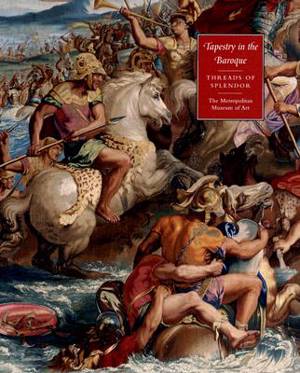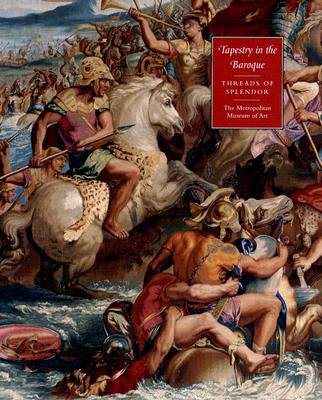
- Afhalen na 1 uur in een winkel met voorraad
- Gratis thuislevering in België vanaf € 30
- Ruim aanbod met 7 miljoen producten
- Afhalen na 1 uur in een winkel met voorraad
- Gratis thuislevering in België vanaf € 30
- Ruim aanbod met 7 miljoen producten
Zoeken
Omschrijving
Conceived as a sequel to the critically acclaimed Tapestry in the Renaissance: Art and Magnificence (2002), this lavishly illustrated volume is the first comprehensive survey of 17th-century European tapestry available in English. From the Middle Ages until the late 18th century, European courts expended vast sums on tapestries, which were made with precious materials after designs by the leading artists of the day. Yet, this spectacular medium is still often presented as a decorative art of lesser importance. Tapestry in the Baroque challenges this notion, demonstrating that tapestry remained among the most prestigious figurative mediums throughout the 17th and early 18th centuries, prized by the rich for its artistry and as a propaganda tool.
The book features forty-five of the finest surviving examples from collections in more than fifteen countries, as well as a number of related designs and oil sketches. Through these it examines the stylistic developments of tapestry between 1590 and 1720, when such masters as Peter Paul Rubens, Jacob Jordaens, Simon Vouet, Charles Le Brun, Pietro da Cortona, and Giovanni Romanelli responded to the challenges and opportunities of the medium in the context of contemporary artistic developments.
The book features forty-five of the finest surviving examples from collections in more than fifteen countries, as well as a number of related designs and oil sketches. Through these it examines the stylistic developments of tapestry between 1590 and 1720, when such masters as Peter Paul Rubens, Jacob Jordaens, Simon Vouet, Charles Le Brun, Pietro da Cortona, and Giovanni Romanelli responded to the challenges and opportunities of the medium in the context of contemporary artistic developments.
Specificaties
Betrokkenen
- Auteur(s):
- Uitgeverij:
Inhoud
- Aantal bladzijden:
- 563
- Taal:
- Engels
- Reeks:
Eigenschappen
- Productcode (EAN):
- 9780300124071
- Verschijningsdatum:
- 1/11/2007
- Uitvoering:
- Hardcover
- Formaat:
- Genaaid
- Afmetingen:
- 255 mm x 312 mm
- Gewicht:
- 3410 g

Alleen bij Standaard Boekhandel
+ 167 punten op je klantenkaart van Standaard Boekhandel
Beoordelingen
We publiceren alleen reviews die voldoen aan de voorwaarden voor reviews. Bekijk onze voorwaarden voor reviews.











